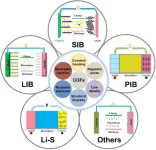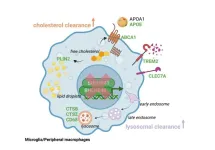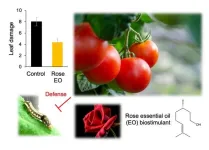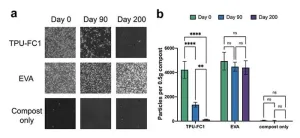They published their work on Mar. 15th in Energy Material Advances.
"It is highly necessary to design highly conductive and high-performance materials for application in alkaline ion batteries," said paper author Xijun Xu, associate Professor at the College of Chemical Engineering and Light Industry, Guangdong University of Technology.
"In recent years, with the development of large-scale power systems such as electric vehicles, the demand for secondary batteries has gradually shifted towards high power and low cost. Furthermore, in light of the increasing energy and environmental concerns, the exploration of green and renewable resources has become a research hotspot. Among them, lithium-ion batteries are currently the mainstream energy storage devices. However, due to the uneven distribution and expensive price of lithium resources, the research and development of high-performance and highly safe alkaline ion secondary batteries hold significant practical significance."
Xu said that covalent organic framework (COF) materials exhibit several advantageous characteristics and demonstrate excellent electrochemical performance. Their unique network framework provides good structural stability and outstanding cycling performance, offering broad prospects in electronic devices and energy storage applications.
"The ability of COFs to pre-design oxidation-reduction active sites with precise density and position provides them with the flexibility to alter the energy density of electrode materials. Additionally, the introduction of organic functional groups into COF structures promotes the migration of metal ions, demonstrating the potential to address the issue of slow ion transport in batteries."
"Typically, the introduction of functional groups or heteroatoms with strong electron-withdrawing characteristics is a common method to effectively reduce the bandgap and increase conjugation to enhance the intrinsic conductivity of organic electrode materials. Structural design is necessary to achieve highly stable and high-capacity COF materials. It is worth noting that in alkali metal ion batteries, larger ion sizes imply slower ion transport rates and larger volume changes during reversible cycling. Therefore, the influence of larger ion sizes should be considered in the design process. The design principles of COFs in metal ion battery systems mainly involve the regulation of pore structures, chemical reaction sites, and surface functional groups. Thus, by designing the structure and properties of COFs in a rational manner, high-performance, stable, and sustainable alkaline ion battery systems can be achieved."
"Currently, the development of COF batteries is still in its early stages and faces several challenges. For instance, the synthesis conditions for obtaining most COFs are complex and not amenable to large-scale production. Additionally, polycrystalline COFs suffer from various structural defects," Xu said, "The significant correlation between the adaptable structure of COFs and the electrochemical functionality of batteries is evident. The extensive application of COFs in batteries is still ongoing, and many areas require improvement. Furthermore, a thorough understanding of the electrochemical reaction mechanisms is equally crucial for the design of high-performance materials. In general, further research is needed for the application of COFs in batteries, and in the future, overcoming the aforementioned challenges is necessary to enhance the electrochemical properties of COFs. Simplification of reaction conditions would also be advantageous for practical applications."
Other contributors include Tao Yang, Shaomin Ji and Yanping Huo, College of Chemical Engineering and Light Industry, Guangdong University of Technology; Yan Yang and Jun Liu, School of Materials Science and Engineering, Guangdong Provincial Key Laboratory of Advanced Energy Storage Materials, South China University of Technology; Weizhen Fan and Jingwei Zhao, Research and Development Center, Guangzhou Tinci Materials Technology Co., Ltd.; Yanxue Wu and Yanping Huo, Analytical&Testing Center, Guangdong University of Technology.
The National Key Research and Development Program of China (no. 2022YFB2502000), the National Natural Science Foundation of China (no. U21A2033251771076, 52301266), Guangdong Basic and Applied Basic Research Foundation (nos. 2020B1515120049, 2021A1515010332), and R&D Program in Key Areas of Guangdong Province (no. 2020B0101030005) supported this work.
###
Reference
Authors: TAO YANG, XIJUN XU , YAN YANG, WEIZHEN FAN, YANXUE WU, SHAOMIN JI, JINGWEI ZHAO , JUN LIU , AND YANPING HUO
Title of original paper: Recent Advances and Perspectives of Covalent Organic Frameworks for Alkali-Ion Batteries
Journal: Energy Material Advances
DOI: 10.34133/energymatadv.0078
Affiliations: 1College of Chemical Engineering and Light Industry, Guangdong University of Technology, Guangzhou 510006, PR China. 2School of Materials Science and Engineering, Guangdong Provincial Key Laboratory of Advanced Energy Storage Materials, South China University of Technology, Guangzhou 510641, China. 3Research and Development Center, Guangzhou Tinci Materials Technology Co. Ltd., Guangzhou 510765, China. 4Analytical & Testing Center, Guangdong University of Technology, Guangzhou 510006, PR China.
About the Authors:
Xijun Xu received his Ph.D. degree from the South China University of Technology in 2019. From 2020 to 2021, he worked as a visiting fellowship at the City University of Hong Kong for electrocatalytic CO2 reduction. He currently works in the College of Chemical Engineering and Light Industry at Guangdong University of Technology, P.R. China. Dr. Xu has been focused on designing nanostructured transition metal compounds as cathode/anode materials for Li/Na/K-ion batteries. Currently, his research interest includes nanoarray-based flexible electrodes, metal-organic framework derived materials, and solid-state polymer electrolytes for alkali-ion batteries.
Jingwei Zhao, Senior engineer and director of Guangzhou Tinci Materials Technology Co., Ltd., His current research interests focusing on design of electrolyte additive and electrode materials for Li-ion batteries.
Jun Liu is a full professor of materials science and engineering at the South China University of Technology, P.R. China. He received his Ph.D. in chemical engineering from Dalian University of Technology in 2010. From 2012 to 2015, he worked as a postdoctoral researcher at Deakin University (Australia) and Max-Planck Institute for Solid State Research (Germany). His current research interests mainly include the design of novel electrode/electrolyte materials and the nondestructive testing technologies for rechargeable batteries, especially for Li-/Na-ion and all-solid-state batteries.
Yanping Huo, a full professor of Guangdong University of Technology, He received his Ph.D. in Guangzhou Institute of Chemistry, Chinese Academy of Sciences in 2006. Subsquently, he worked as a postdoctoral researcher at University of Hong Kong, University of Sciences, Shanghai Institute of Organic Chemistry of Chinese Academy of Sciences and University of California. Current, he is a director of Analysis and Testing Center of Guangdong University of Technology. Main research fields including: 1. Design of organic photofunctional materials and their application in organic light-emitting diodes (OLED); 2. Design of organic electrolyte additive and polymer solid electrolyte for Li--ion and all-solid-state batteries; 3. Research on carbon dioxide catalytic transformation.
END









